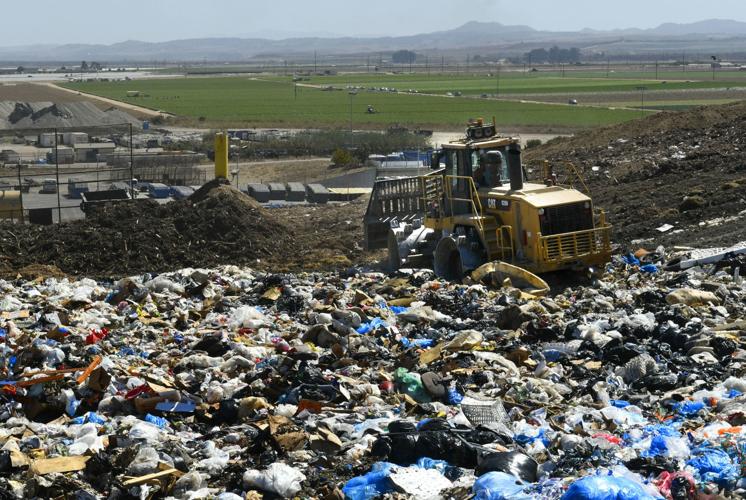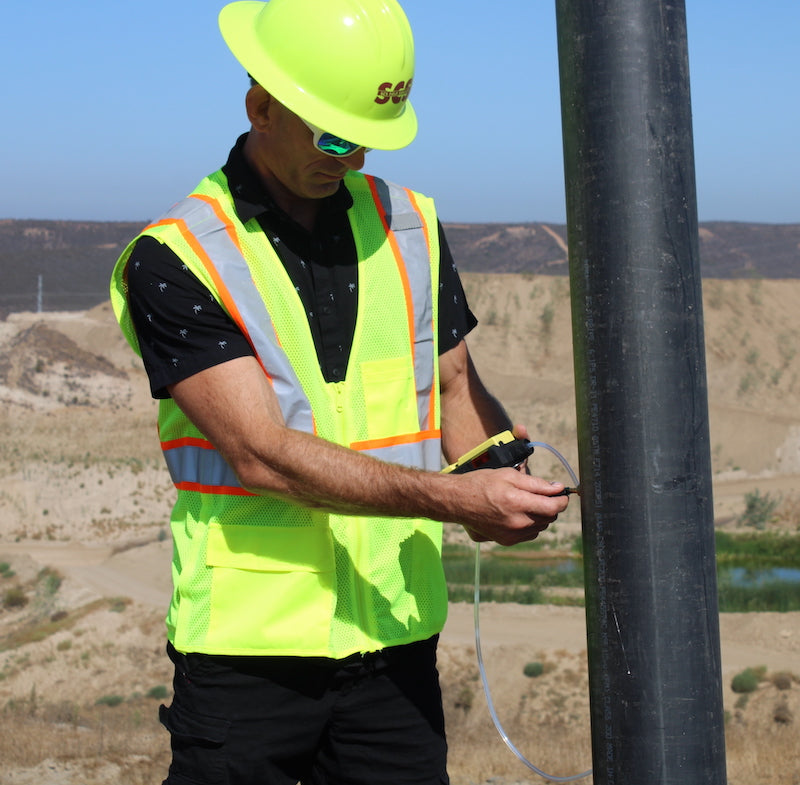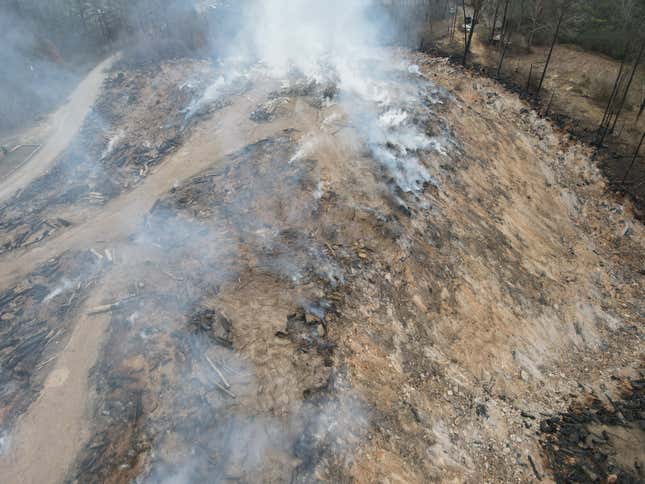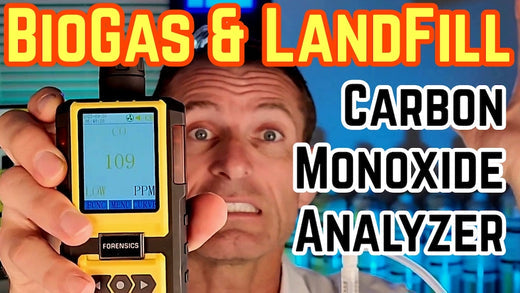Landfills and landfill gas extraction wells emit hazardous gases, including methane, carbon dioxide, and carbon monoxide, collectively known as biogas. Biogas analyzers and biogas detection is crucial for ensuring the safety of workers and nearby communities. Investing in a professional carbon monoxide analyzer is essential for obtaining the most accurate CO readings while minimizing interference from hydrogen gas, moisture, and humidity in the sample. These analyzers continuously monitor the atmosphere, providing real-time data on carbon monoxide levels. By implementing reliable gas detection equipment, landfill operators can effectively manage the risks associated with biogas emissions, protect personnel from harmful exposure, and maintain a safe working environment.
Pros |
Cons |
|
✅ A Carbon monoxide analyzer is a useful tool for landfill technicians to inspect landfill gas ✅ Carbon monoxide analyzers can detect the presence of part per million carbon monoxide gas concentration ✅ A solid Carbon monoxide analyzers should have a minimal interference from humidity and hydrogen gas |
⛔ Carbon monoxide analyzers show erroneous levels when a gas sample has hydrogen or elevated levels of humidity as found in landfill gas ⛔ Carbon monoxide analyzers do not last forever and their sensors must be replaced between 2 to 3 years ⛔ Periodic bump testing and calibration is required to ensure correct and accurate operation of the CO Analyzer |
Best Carbon Monoxide Analyzer for Landfill and Biogas?
In light of the requirements from 40 CFR 63, subpart AAA, the best more appropriate landfill gas analyzers for carbon monoxide gas are:
- Forensics Carbon Monoxide Analyzer for Landfill Gas (LFG)
- LADTEX GEM5000 Series
- RKI Eagle 2 (configured for LFG)
- Nova Analytical Systems, Analyzers for Landfill
- MRU Instruments Optimal 7
- Envision Gas Analyzer

What are the requirements of a CO Analyzer for Landfill?
A portable handheld CO Analyzer used for landfill gas measurement should fulfill the requirements set forth in "Alternative Method For The Field Determination of Carbon Monoxide Concentration in Landfill Gas Wellheads under 40 CFR 63, subpart AAAA." These requirements were approved on 09/14/2021 by the EPA, Measurement Technology Group.
Some highlights of the CO Analyzer for landfill gas wellheads requirements include:
-
CO analyzers must have a H2 compensated CO sensor.
-
CO analyzers with electrochemical sensors must have a carbon filter to remove H2S.
-
CO analyzer must not show interference to methane (CH4), carbon dioxide (CO2), oxygen (O2), and nitrogen (N2) that are commonly found in landfill gas.
-
Liquid must be prevented from entering the analyzer by using a water trap or appropriate filter.
-
Gas sample hose from the wellhead to the gas analyzer must be made of silicone, PVC or other similar material that does not absorb or otherwise alter the sample gas.
-
CO analyzer should have a vacuum pump suitable to pull against the wellhead vacuum and to transport gas from the sample point to the analyzer.
-
CO Analyzer must be tested to NIST Traceable Sources with +/- 2% accuracy (two point calibration and verification, ZERO and SPAN). A certificate must be provided by the manufacturer with the product, in addition to include certain provisions and certifications.
-
CO Analyzer response with a R-squared greater than or equal to 0.975 to be considered linear.
-
CO Analyzer error must be within ±5.0 percent of the calibration span and drift less than ±3.0 percent of the calibration span.

What is Landfill Gas (LFG)?
The subsurface environment of a landfill is made up of a variety of gases that are produced as a result of chemical reactions within the waste. Methane, carbon dioxide, nitrogen, oxygen, and carbon monoxide are the most abundant.
Gases emitted from landfills have the potential to generate odors in nearby residences and property, in addition to dangerous environmentally harming gases.
How is Landfill Biogas Controlled?
Landfill gas control is an elaborate science. Controlling the migration of landfill gas and odors can be done with active gas collection devices. These systems use a variety of wells and piping networks to extract gas from the landfill.
Landfill gas is collected and burned on site, or it is used in a gas-to-energy recovery system to generate electricity. Covering the trash with soil on a daily basis may also assist to lessen odor.

How is Carbon Monoxide Produced in Landfill?
Carbon Monoxide gas is produced in landfills due to two primary reasons:
- Land fill Fires which combustion takes place and as a result produces carbon monoxide as a by-product. Tell tale signs of an actual landfill subsurface fire includes, elevated carbon monoxide in excess of 1000ppm, smoke and elevated gas sample temperature.
- Elevated Temperatures, which has been shown to also generate carbon monoxide (up to 2000ppm). Bacterial activity increases as the temperature of the landfill rises, resulting in increasing gas generation. Temperature rises may speed up the pace of volatilization and chemical processes.
- Age. More gas will be produced by recently buried waste than by older rubbish. Within 1 to 3 years, landfills typically emit significant amounts of gas. Peak gas production normally happens 5 to 7 years after garbage is disposed of. Almost all gas is created within 20 years of garbage disposal; but, minor amounts of gas may continue to be discharged from a landfill for another 50 years or longer. A low-methane yield scenario, on the other hand, predicts that slowly degrading garbage will produce methane in 5 years and continue to emit gas for another 40 years. Depending on when the waste was originally dumped in each region, different parts of the landfill may be in different stages of decomposition at the same time.
What is a Carbon Monoxide Analyzer for Landfill?
A carbon monoxide analyzer is a device used to sense and monitor the presence of carbon monoxide gas. For landfill applications, the carbon monoxide gas is measured in ppm, or parts per million and samples are often taken in various open air environments and extraction wells points. When unsafe levels of ppm are reached, the device will alert the user via audible or visuals alarms and provide the instantaneous carbon monoxide concentration in the ppm range.
What types of Analyzers exist for Landfill Gas Measurement?
There are primarily two types used for landfill gas measurements.
1. Handheld Portable Carbon Monoxide Analyzers
These are portable units that can be used to do point wellhead checks and in addition to outdoor or indoor air quality measurements. These units are handheld, have a build in pump and read the instantaneous concentration of a target gas, such as carbon monoxide. Accessories include a probe, tubing, water trap and carbon filter. Typically battery operated, rechargeable and fully digital. Usual price range from $500 to $2000.

2. Continuous Emissions Monitoring
These are units are fixed and stationary. They continuously monitor and read the levels of gases from wellheads when gas is being extracted and a primary tool in a gas extraction process. These units require custom fitting and operate unmanned. These units typically send data via the internet, employ more expensive sensing technology that last longer than traditional electrochemical sensors that are found in lower cost handheld units. Sensing technology employs laser, LED, IR or UV absorption technology and cost from $10,000 to $50,000.

How Does a Carbon Monoxide Analyzer Function?
Like most types of carbon monoxide detectors, a carbon monoxide analyzer for landfill gas detection includes two main parts. Electronics for signal processing and the CO gas sensor. These two components work in conjunction with one another so that the electronics receives the levels of carbon monoxide that the electrochemical sensor detects. However, for landfill application, the gas sampling system is also important, requiring a water trap, charcoal filter, silicone tubing and a pump to extract the gas and deliver it to the gas sensor within the CO Analyzer.

How is Landfill Gas Produced?
Bacteria causes garbage in landfills to degrade over time. Gases are produced by both the ingredients and the decomposition process. The amount of gas produced during decomposition – or waste breakdown – is determined by a number of parameters, including the kind and moisture content of the waste, the amount of oxygen present, and the temperature inside the landfill.
What Dangers Does Carbon Monoxide Pose in a Landfill?
Carbon monoxide and landfill gas pose a number of potential dangers in a landfill. The most important dangers include:
- Tell tale sign of a landfill fire.
- Risk of explosion in landfills and landfill gas extraction wells.
- Risk of asphyxiation of landfill gas extraction well employees.
- Risk of toxicity if too large a quantity is inhaled, outdoor pollution and environmental pollution.
Why Should You Use A Carbon Monoxide Analyzer for Landfills?
Using a carbon monoxide analyzer in landfills can be advantageous because the analyzer may be able to detect a subsurface fire. Subsurface fires are dangerous because they may burn for a while with no obvious signs before erupting into explosions. Carbon monoxide analyzers can detect these fires before they result in a dangerous explosion.
How Long Does a Carbon Monoxide Analyzer Last?
The majority of carbon monoxide analyzers last between 2 to 3 years. The CO electrochemical cell degrades with time and must be replaced.
What Kinds of Emissions Are Associated with Landfills?
Methane emissions are the most significant emissions associated with landfills. Emissions may also include carbon dioxide, hydrogen sulfide and carbon monoxide. A landfill extraction system makes use of both portable and fixed, continuous monitoring detection equipment.

How Does Landfill Gas Contribute to Emissions?
Landfills are actually the third-largest source of methane gas emissions in the United States. In fact, cutting methane emissions could have a profound impact on reducing climate change, according to a U.N. report.
CASE STUDY: Landfill Fires & Carbon Monoxide Emissions
In California there have been over 25 subsurface landfill fires have been reported in the past 15 years. These fires can produce excessive amounts of carbon monoxide (CO) and other trace toxic gases due to incomplete oxidation. In subsurface landfill fires, CO levels can range from 2,500 to 28,000 parts per million (ppm) at ground surface, which is significantly higher than the immediate danger to life and health (IDLH) level of 1,200 ppm. These conditions can create life-threatening situations, including carbon monoxide and toxic gas exposures. CalRecycle staff use CO levels as an indicator of active underground landfill fires, with levels in excess of 1,000 ppm considered a positive indication of an active fire. Levels between 100 and 1,000 ppm require further monitoring, while levels between 10 and 100 ppm may indicate a fire but without active combustion. Source: CalRecycle

What Happens to Landfill Gas?
Landfill gas can move through the soil pollute outdoor air and the nearby indoor air of adjacent residences. Since it contains harmful components such as methane and carbon monoxide this can be dangerous, highlighting the importance of using carbon monoxide analyzers to track levels and take action is the levels go above normal or allowable levels.

Can You Smell Biogas?
Raw biogas has a distinctive rotten egg smell due to hydrogen sulfide content. When properly processed for use, biogas is usually odorized for safety detection.
Final Words
When selecting a CO analyzer for landfill gas monitoring, it is crucial to ensure that the device meets the specific requirements for this application. Landfill gases are diverse and may interfere with standard CO sensor readings, making gas detection challenging. Carbon monoxide analyzers designed for landfill gas monitoring are equipped to handle these interferences, providing accurate and reliable CO measurements. These analyzers are particularly useful in landfill gas extraction wells, where carbon monoxide concentrations can reach dangerous levels. By investing in a specialized CO analyzer that fulfills the unique requirements of landfill gas monitoring, operators can effectively detect and manage carbon monoxide risks, ensuring the safety of workers and the surrounding environment.
About the Author
Dr. Kos Galatsis ("Dr.Koz") is the President of FORENSICS DETECTORS, where the company operates from the scenic Palos Verdes Peninsula in Los Angeles, California. He is a subject matter expert on gas sensor technology, gas detectors, gas meters, and gas analyzers. He has been designing, building, manufacturing, and testing toxic gas detection systems for over 20 years.

Every day is a blessing for Dr. Koz. He loves to help customers solve their unique problems. Dr. Koz also loves spending time with his wife and his three children going to the beach, grilling burgers, and enjoying the outdoors.
Read more about Forensics Detectors here.
Email: drkoz@forensicsdetectors.com
Phone: +1 424-341-3886

